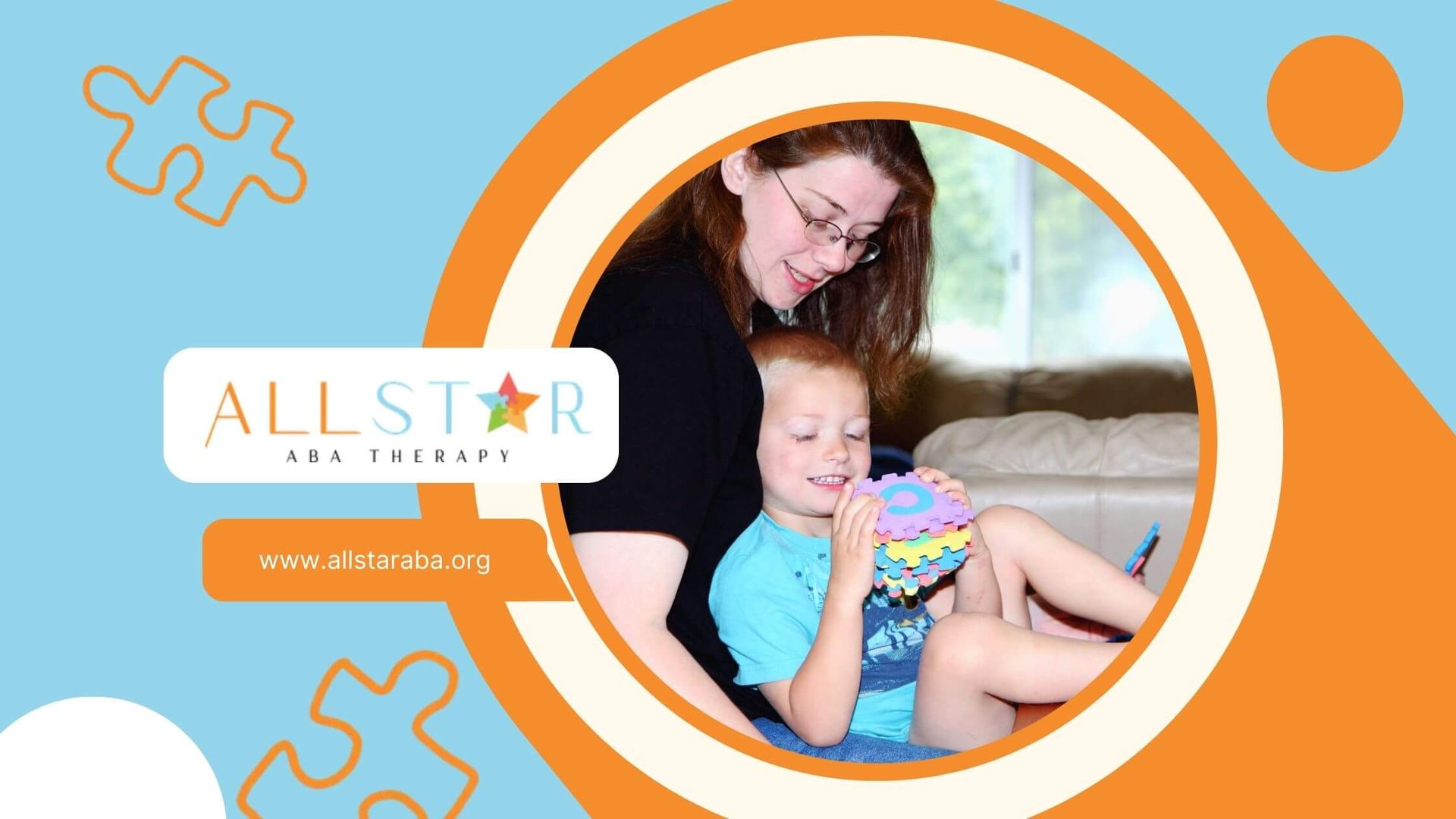New Paragraph
How to Implement Natural Environment Teaching Techniques in ABA Therapy
Natural Environment Teaching (NET) is a transformative approach to learning that focuses on using everyday settings to teach essential skills. By integrating real-life situations—like playtime, community outings, and daily routines—NET encourages learning in natural, meaningful ways. This approach allows children to acquire skills that are directly applicable to their lives, boosting their social interactions, communication abilities, and independence.
In this article, we’ll explore how to implement NETA techniques effectively, creating learning opportunities that fit seamlessly into daily activities. Whether you’re a parent, caregiver, or professional, understanding how to incorporate NETA techniques into your child’s environment can provide a more engaging and functional learning experience.
Introduction to Natural Environment Teaching (NET)
What is Natural Environment Teaching (NET)?
Natural Environment Teaching (NET) is an approach within Applied Behavior Analysis (ABA) that emphasizes teaching skills in everyday settings. This method prioritizes using real-life situations to promote learning and development. You focus on the child's interests and natural interactions, allowing them to engage with their surroundings. NET encourages learning through play, social interactions, and daily routines.
The fundamental aspect of NET is that it is tailored to suit the child's individual needs. Strategies are embedded within the child's natural activities and routines. This method shifts the focus from traditional, structured teaching settings to more fluid environments where the child can thrive.
Benefits of Implementing NET Techniques
Implementing NET techniques can offer numerous advantages for your child. Below are some of the key benefits you may observe:
| Benefit | Description |
|---|---|
| Enhanced Engagement | Learning occurs in familiar contexts, which may capture your child's attention and interest more effectively. |
| Increased Motivation | Activities related to the child's interests can motivate them to participate and learn. |
| Generalization of Skills | Skills learned in natural settings are more likely to be transferred to other situations, making learning more applicable and functional. |
| Improved Social Skills | Interactions with peers and caregivers in natural environments promote socialization and communication. |
| Individualized Learning | Because the techniques can be tailored to each child's unique needs, NET focuses on their specific strengths and challenges. |
By utilizing NET techniques, you can support your child's development in a way that feels natural and enjoyable. This approach can help foster significant growth in skills across various domains, enhancing their overall quality of life.
Principles of Natural Environment Teaching
Natural Environment Teaching (NET) is an effective method that focuses on using the natural surroundings to facilitate learning. By understanding its core principles, you can better implement NET techniques for individuals with behavioral challenges or autism.
Child-Led Learning
Child-led learning is a vital component of NET. This approach places the child at the center of the learning process. You observe the child's interests and preferences, allowing them to take the lead during activities and interactions. This empowers the child and increases motivation, making the learning experience more engaging and effective.
In practice, you can notice when a child shows interest in a specific toy or activity. By following their lead, you can create learning opportunities tailored to their curiosity, encouraging them to explore, ask questions, and engage with the environment.
Individualized Instruction
Individualized instruction is crucial in NET, recognizing that each child has unique needs, strengths, and learning styles. You assess the child’s abilities to develop personalized teaching strategies. This tailored approach ensures that the child receives the appropriate level of support and challenges to promote growth.
You can implement individualized instruction by designing activities that reflect the child's interests and skills. This may include modifying the level of difficulty or incorporating specific themes that resonate with the child. By adjusting your teaching approach, you create an environment where the child can thrive.
Incidental Teaching
Incidental teaching is another important principle of NET. This method involves taking advantage of natural opportunities for teaching and learning that arise spontaneously during everyday activities. You can enhance learning by being attentive to these moments and using them to introduce new concepts or skills.
For example, if a child is playing with blocks and accidentally knocks them over, you might use that moment to discuss cause and effect or to encourage problem-solving skills. By seizing these incidental opportunities, you can incorporate valuable lessons into the child's daily routine, making learning relevant and practical.
Adopting these principles in your approach to Natural Environment Teaching can significantly enhance the learning experiences of children facing challenges, helping them develop essential skills in a supportive and engaging manner.
Strategies for Implementing NET Techniques
Natural Environment Teaching (NET) techniques focus on leveraging everyday situations to promote learning and development. By implementing these strategies, you can create a more engaging and effective learning experience for children.
Creating Learning Opportunities
Creating authentic learning opportunities is essential in NET. You can use daily routines and activities as moments to teach new skills. This can happen during play, meals, or community outings. Look for instances where the child shows interest or engages with their environment to provide teaching moments.
Here are some methods to create learning opportunities:
- Use Everyday Activities: Integrate learning into daily tasks like grocery shopping, cooking, or cleaning to teach various skills.
- Follow the Child’s Interests: Pay attention to what captures their attention and build lessons around those interests.
- Incorporate Social Interactions: Encourage peer interactions during playdates or group activities to foster social skills.
- Explore the Outdoors: Use nature walks or visits to the park to encourage exploration and discussions about the environment.
Prompting and Reinforcement in the Natural Environment
Prompting and reinforcement are key elements in NET. You can support the child’s learning by using prompts effectively and reinforcing positive behaviors. Here’s how you can implement these practices:
- Types of Prompts: Use verbal, gestural, or visual prompts based on the child’s needs. Gradually reduce prompts as the child gains independence.
- Immediate Reinforcement: Provide immediate praise or rewards when the child successfully engages in a desired behavior or demonstrates a new skill. Recognize their efforts to motivate them further.
- Natural Reinforcers: Take advantage of natural consequences as reinforcement. For example, if a child shares a toy, they may receive positive interactions from peers, reinforcing that behavior.
- Create a Reinforcement System: Develop a simple chart to track achievements or progress. This can help motivate the child while providing a structure for recognizing their accomplishments.
By actively creating learning opportunities and effectively using prompting and reinforcement techniques, you can enhance the implementation of NET techniques in everyday situations, making learning more relevant and enjoyable for the child.
Setting Up the Learning Environment
Creating an effective learning environment is essential for implementing NET techniques. This involves structuring the space to promote success and incorporating natural reinforcers to enhance motivation and engagement.
Structuring the Environment for Success
To foster a supportive and enriching environment, consider the following strategies:
- Organized Space: Keep materials and activities organized. This helps your child to easily access what they need and understand where to find their preferred items.
- Minimize Distractions: Limit background noise and visual distractions. This allows your child to focus on the learning activities and interactions.
- Defined Areas: Create specific areas for different activities. For example, designate a reading nook, play area, or art station to help your child transition between tasks more smoothly.
- Visual Supports: Use visual schedules or cues to guide your child through activities. These can provide structure and predictability in their day.
Incorporating Natural Reinforcers
Natural reinforcers are crucial for motivating your child in a learning environment. These reinforcers can be integrated into daily activities and interactions:
- Understanding Interests: Identify what your child enjoys and integrate those interests into learning opportunities. For instance, if your child loves animals, use animal toys or activities focusing on animals.
- Immediate Feedback: Provide immediate verbal praise or acknowledgment when your child engages in desired behaviors. This reinforces the positive behavior and encourages repetition.
- Natural Consequences: Incorporate learning opportunities that lead to natural consequences. For example, if your child chooses to help make a snack, they can enjoy the food they helped prepare.
- Peer Interaction: Encourage play and activities with peers. Positive social interactions can act as powerful reinforcers, fostering communication and engagement.
By structuring the environment for success and incorporating natural reinforcers, you can enhance the effectiveness of implementing NET techniques. Your child will be more likely to participate actively in learning.
Addressing Challenges and Making Adjustments
In the practice of Natural Environment Teaching (NET), it is essential to anticipate and address potential challenges. This ensures effective outcomes for children with autism or behavioral difficulties. You can implement strategies to recognize barriers and make necessary adaptations.
Recognizing and Overcoming Barriers
When you engage in implementing NET techniques, you may encounter various obstacles that can impede progress. These challenges can stem from environmental factors, communication difficulties, or individual preferences.
- Environmental Distractions: Your child's learning space may have elements that distract them, such as loud noises or visual clutter. Identify these distractions and work to minimize them by altering the setup of the environment or choosing more suitable locations for activities.
- Communication Challenges: Some children may struggle to communicate their needs or preferences. Enhancing your child's communication skills may involve using visual aids, gestures, or other alternative communication methods to ensure that they can express themselves effectively.
- Motivation Deficiencies: Some children might show little interest in typical learning activities. It is important to align learning opportunities with your child’s interests. By integrating preferred activities or toys into the learning process, you can enhance engagement and motivation.
Making Adaptations for Individual Needs
Each child has unique requirements, and making personalized adjustments is crucial in the NET approach. You can tailor strategies to fit your child's individual learning style, preferences, and needs.
- Personalized Learning Plans: Develop a specific plan that outlines your child's strengths and areas of growth. This helps you focus on important goals while adapting teaching methods to their unique learning style. Ensure you re-evaluate and update this plan regularly based on observed progress.
- Flexibility in Teaching Strategies: You may find that certain techniques work better for some children than others. Be open to experimenting with various strategies, such as visual supports or hands-on activities, to see which resonates most with your child.
- Adjusting Pace: Each child learns at their own pace. Monitor your child's reaction to new concepts and adjust the speed of instruction accordingly. Take breaks when needed to avoid frustration and reinforce their understanding before moving on to new material.
By recognizing barriers and adapting strategies for individual needs, you can effectively support your child's learning journey through Natural Environment Teaching (NET). Remember, a thoughtful and responsive approach can lead to more successful and meaningful learning experiences.
Collaborating with Professionals and Caregivers
Successful implementation of Natural Environment Teaching (NET) techniques requires collaboration among parents, therapists, and caregivers. By working together, you can create a supportive learning environment that fosters your child’s development.
Open Communication and Feedback
Establishing open lines of communication is vital. You and the professionals involved in your child's education should feel comfortable sharing thoughts, observations, and suggestions. Regular discussions help ensure that everyone is aligned on goals and strategies.
- Schedule regular meetings to discuss progress.
- Share specific examples of successes and challenges.
- Provide feedback on the effectiveness of the techniques used.
This collaborative approach encourages consistency and allows you to address concerns promptly. It also fosters a sense of teamwork, ensuring that everyone is invested in your child's growth.
Consistency in Applying NET Techniques
Consistency in applying NET techniques is key to achieving positive outcomes. All caregivers should use similar language, strategies, and reinforcers when working with your child. This uniformity helps your child understand expectations and reinforces learning.
To maintain consistency, consider the following:
- Create a shared system for tracking progress and approaches.
- Use visual aids or reference materials that everyone can access.
- Conduct training sessions for caregivers to ensure everyone understands the techniques.
By reinforcing the same principles and methods across various settings, you create a cohesive learning experience for your child, allowing them to thrive in their natural environment.
Conclusion
In conclusion, implementing NETA techniques provides a unique and effective way to foster meaningful learning experiences for children. By using everyday settings to teach essential skills, children can develop social, communication, and life skills that are practical and applicable in real-world situations. The flexibility and adaptability of NETA make it a powerful tool for promoting independence, confidence, and positive behavior.
If you're ready to give your child the personalized support they need, All Star ABA offers tailored ABA therapy services in Maryland. Our team of professionals is skilled in implementing NETA techniques to help children thrive in natural environments, enhancing their learning experiences and overall development.
Contact us today to learn more about how we can help your child reach their full potential with individualized, evidence-based therapy.
FAQs
What is Natural Environment Teaching (NET)?
NET is an approach to teaching that emphasizes using real-life settings and activities to teach skills. It integrates learning into natural routines, such as playing, socializing, and everyday tasks, making it highly relevant and engaging for children.
How can I implement NETA techniques at home?
To implement NETA techniques at home, focus on using everyday situations as learning opportunities. This could include teaching social skills during playdates, reinforcing communication during meal times, or practicing problem-solving in routine activities like grocery shopping. Tailor the experience to your child’s interests to keep them engaged.
How does NETA support skill generalization?
NET encourages skill generalization by teaching children in varied, real-life contexts. When children learn skills in natural environments, they are more likely to apply them across different settings and with various people, promoting independence and broader skill use.
Need Support?
We're Here to Help!
Our experienced team is ready to assist you. Reach out today to discuss how we can support your child's development and well-being.
Get started with expert ABA therapy today.








